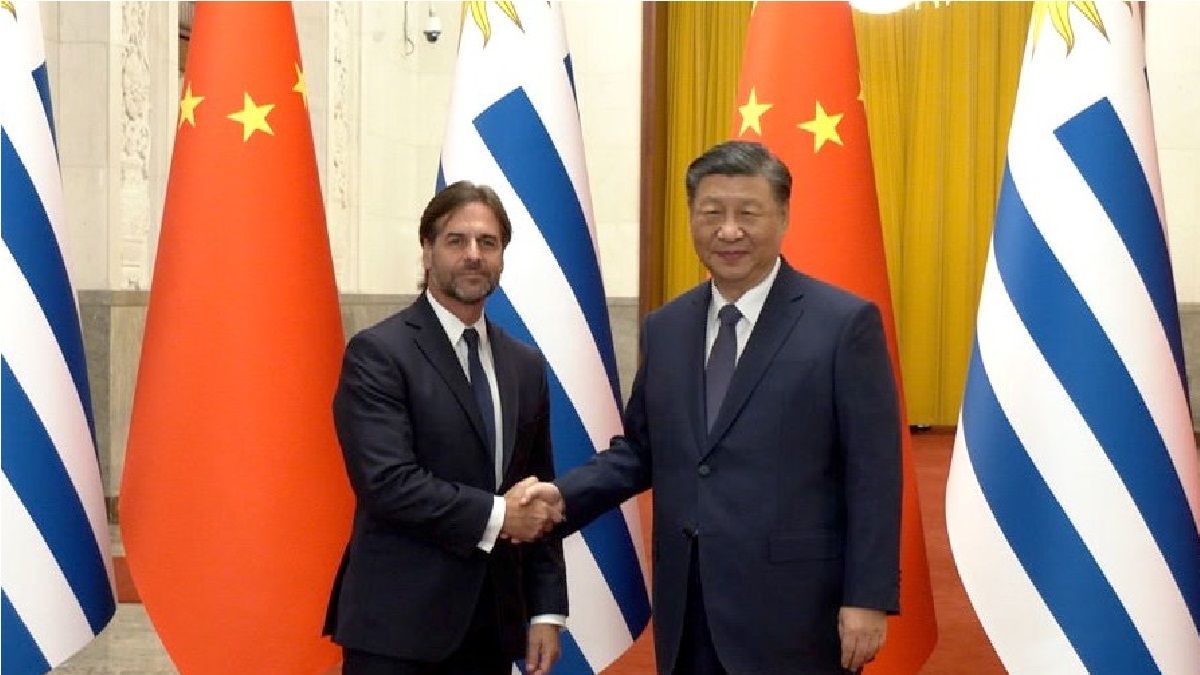President Luis Lacalle Pou culminates his important visit to China with several objectives achieved, although the Uruguayan government is careful not to encourage false expectations. In political terms, the central issue is the possible signing of a Free Trade Agreement (FTA) with the Asian giant, and the issue was included in the final declaration of both countries.
Specifically, the parties “welcome the completion of the Joint Feasibility Study on a possible Free Trade Agreement (FTA) Uruguay–China”, and based on their conclusions “they reaffirm their willingness to promote the construction of a free trade association.” These concepts – which are in point 9 of the joint declaration – are followed by a mention of the Mercosur: “both Parties are willing to promote dialogue on free trade between the Mercosur and China”.
Evidently, China cannot ignore that Uruguay integrates the Mercosur and its room for maneuver is restricted by the block. Even so, the fact that the desire for a bilateral agreement is made explicit in the declaration is significant. Added to this is the new political situation in the Mercosurwith the choice of Javier Milei in Argentina. The next Argentine president has criticized the organization and his speech is prone to greater openness, which coincides with the Uruguayan position and eastern demands for greater flexibility in the bloc.
From saying to fact
Uruguay signed several new agreements and protocols with the Chinese government, aiming to establish a Comprehensive Strategic Alliance. According to the doctor in International Relations, Ignacio Barthesaghithis type of alliance reserves China to large countries, so the fact that it has been agreed with Uruguay It is significant and illustrates the relevance that the Chinese government gives to the relationship with the country.
Even so, some businessmen expressed to Ambit that Uruguay has important challenges to advance more trade with China. “It must be remembered that maritime freight China They take between 55 and 60 days, so the possibility of placing fresh products is limited, especially for fruits,” they explained. One of the signed protocols is linked to the trade in citrus fruits, and enables the export of lemons, in addition to oranges and tangerines, already enabled. “To send these fresh fruits, the logistics have to be very well oiled,” they added. China It is not among the main destinations for Uruguayan citrus fruits, but its importance may increase in the future.
The greatest and most immediate impact will surely occur in the meat sectorfor which China It is the main destination. The reduction of the minimum length of stay in the establishment prior to slaughter (which dropped from 90 to 46 days) will give more flexibility to livestock businesses for the Asian giant. In addition, the authorization of purchases of tripe and booklet (ruminant stomachs) can add about 40 million dollars more per year to the meat processing industry.
Due to the logistical issues described, most of the Uruguayan meat is exported to China frozen, which gives it a much longer shelf life, although sacrificing quality.
Uruguay exported goods to China for about US$1.4 billion in the first 10 months of the year. The figure is 44% lower than that of the same period in 2022, due to the sharp drop in soybean exports (due to the drought) and the drop in the price of meat. To that figure we must add pulp (which leaves from free zones and has China as its second destination, behind the EU), and some other products that leave free zones. Overcome the droughtexports to China should exceed US$3 billion in 2024.
Source: Ambito




